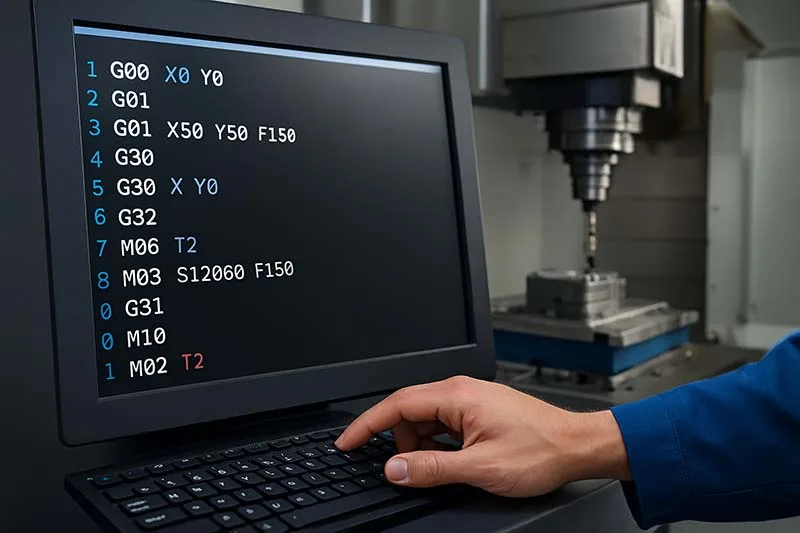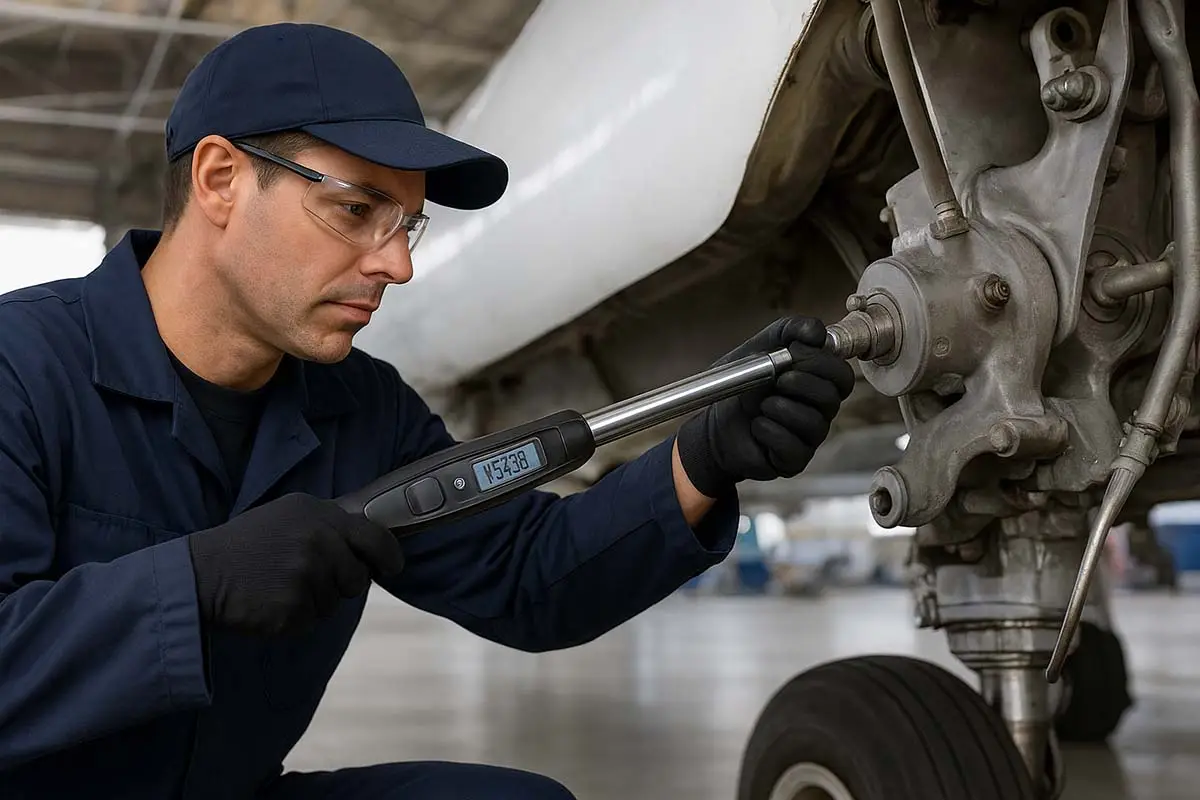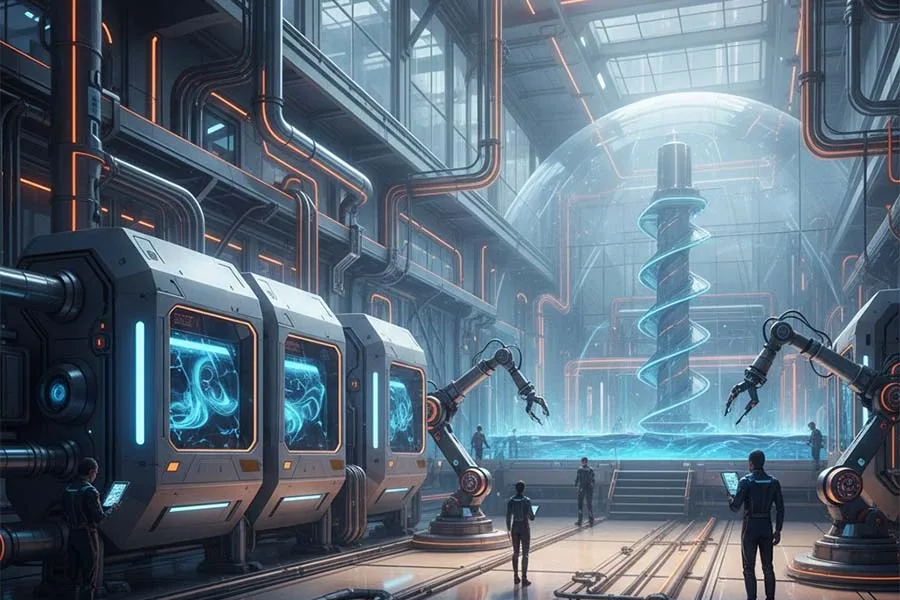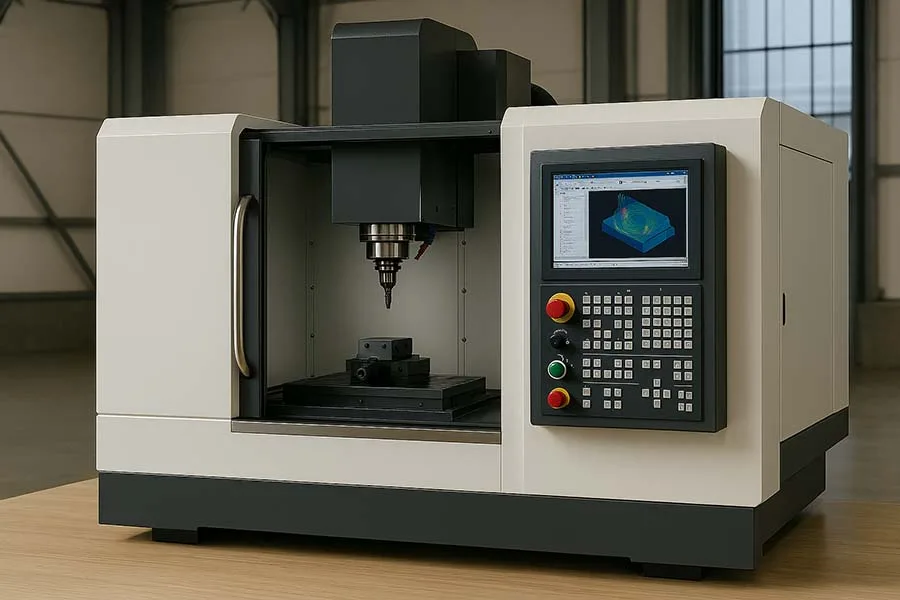Introduction
Even the most advanced CNC machines are only as smart as the instructions they receive. And let’s face it — CNC programming isn’t immune to mistakes. A single missing decimal point or forgotten code can transform a perfect machining plan into a broken tool, scrapped part, or, in the worst cases, a machine crash.
The good news? Most errors in CNC programming are preventable once you know what to look for. In this article, we’ll explore the most common CNC programming errors, why they happen, and how to avoid them.
Why CNC Programming Errors Happen
Programming mistakes usually fall into three categories:
- Human errors – typos, miscalculations, or incorrect tool data.
- Software issues – CAM output not optimized, wrong post-processor setup.
- Machine limitations – differences in control systems (Fanuc, Siemens, Heidenhain) or tool capacity.
What causes CNC programming errors?
Most CNC programming errors come from typos, incorrect parameters, mismatched units, or miscommunication between CAD/CAM software and the CNC machine.
The Most Common CNC Programming Errors
1. Wrong Coordinate System Setup
Forgetting to set the correct work offset (G54, G55, etc.) is one of the most frequent mistakes. If the CNC doesn’t know where zero is, it won’t cut where you expect it to.
- Result: Holes drilled in the wrong place, parts ruined.
- Prevention: Always verify work offsets with a test run or dry run.
👉 Funny fact: Many machinists admit their first “scrap pile” was built almost entirely from incorrect zero points.
2. Incorrect Units (Inches vs Millimeters)
Mixing up G20 (inch) and G21 (millimeter) commands can cause catastrophic errors. What you thought was a 10 mm cut becomes a 10-inch cut.
- Result: Oversized parts, broken tools.
- Prevention: Always confirm units before running the program.
3. Missing or Wrong Tool Offsets
If tool length or diameter offsets are not set correctly, the machine will cut too deep, too shallow, or in the wrong location.
- Result: Poor tolerances, tool crashes.
- Prevention: Double-check offsets in the tool library before starting.
4. Incorrect Feed and Speed Settings
Entering the wrong feed rate (F) or spindle speed (S) can either burn the tool or snap it instantly.
- Result: Damaged tools, poor surface finish, or scrap.
- Prevention: Use manufacturer-recommended cutting parameters for each material.
👉 Lesser-known fact: Some aerospace shops run extensive simulations just to optimize feeds and speeds — shaving seconds off cycle times can save thousands of dollars.
5. Wrong Tool Call (M06 Error)
Calling the wrong tool (e.g., T3 instead of T2) is more common than you’d think. If the CAM file and the tool carousel don’t match, disaster follows.
- Result: Wrong geometry, scrap parts.
- Prevention: Match tool numbers in the program with the actual machine setup.
6. Forgetting Coolant Commands
Coolant (M08 on, M09 off) is essential for machining metals. Forgetting it can quickly overheat and ruin both the tool and the workpiece.
- Result: Tool wear, rough finishes.
- Prevention: Always include coolant commands in long programs.
7. Poorly Managed Toolpaths
Badly optimized toolpaths can cause collisions, wasted motion, or excessive tool wear. Sometimes, CAM-generated code is simply inefficient.
- Result: Longer cycle times, broken tools.
- Prevention: Simulate toolpaths in CAM software and review carefully.
8. Not Running a Simulation or Dry Run
Skipping a simulation is like driving blindfolded. Even experienced programmers sometimes rely too much on CAM output.
- Result: Machine crashes, high repair costs.
- Prevention: Always run a backplot or dry run before full production.
How to Avoid CNC Programming Errors
- Verify code line by line (especially manually written programs).
- Use simulations in CAM software.
- Perform dry runs with no part or with the tool above the workpiece.
- Standardize tooling and offsets across machines.
- Train operators and programmers regularly.
How can CNC programming errors be avoided?
By verifying G-code, running simulations, checking offsets, and standardizing setup procedures before production.
Want To Learn More?
- CNC Machining Fundamentals
- CNC Machining Explained: Precision, Process & Possibilities
- CNC Technology: From Punched Tape to Smart Machining
- Types of CNC Machines (Lathe, Mill, Router, Plasma, etc.)
- CNC Programming Languages (G-code, M-code)
- Most Common CNC Programming Errors
- CNC vs Manual Machining: Differences, Pros & Cons Explained
Conclusion
CNC programming errors can turn an expensive piece of equipment into a scrap factory — but they’re not inevitable. The most common mistakes, from wrong coordinate systems to incorrect feed rates, usually come down to human oversight. With careful checks, simulations, and good shop practices, machinists can dramatically reduce errors and keep production smooth.
After all, CNC machines don’t make mistakes — they just follow instructions. The challenge is making sure the instructions are right.





